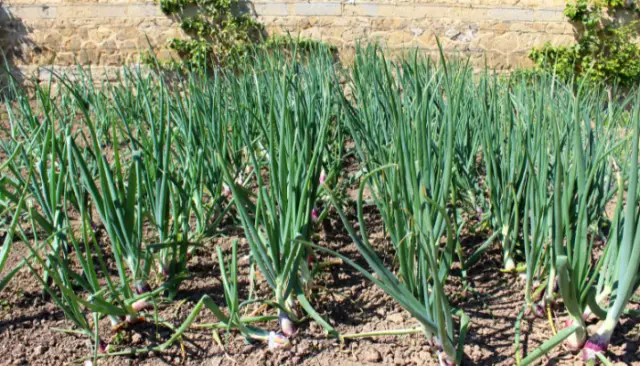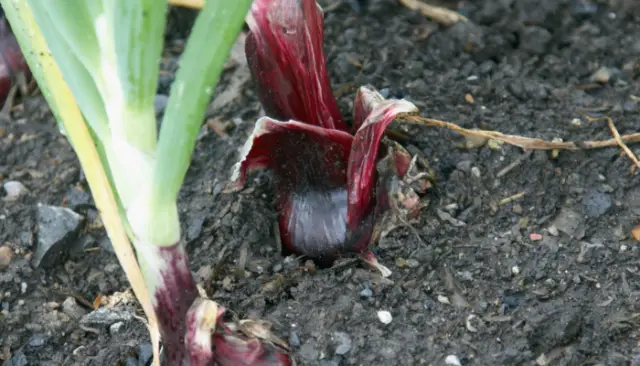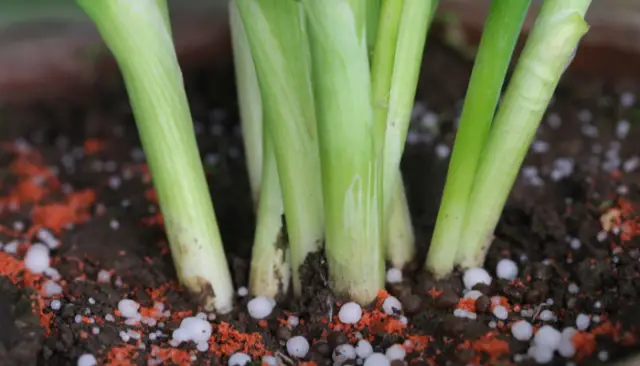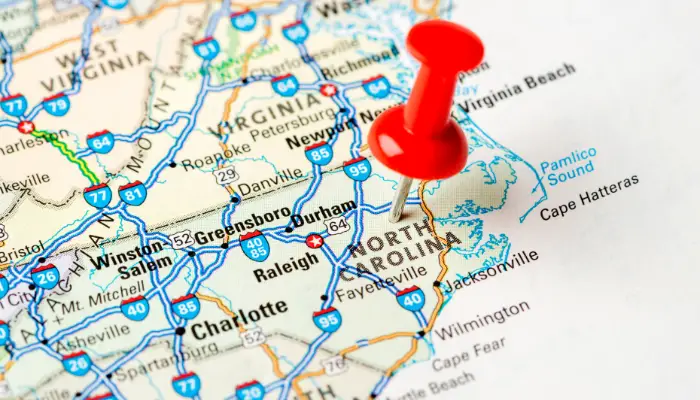How to Grow Your Own Red Onions in 4 Easy Steps
Red onions are a type of onion that has a mild, sweet flavor and a beautiful purple-red color. They are great for adding crunch and color to salads, sandwiches, burgers, and more. But did you know that you can also grow your red onions in your garden? Growing red onions is not very difficult, and you can enjoy fresh, homegrown onions throughout the year. In this blog post, I will show you how to grow and care for red onions in your garden, from planting to harvesting.
What You Need to Grow Red Onions

To grow red onions, you will need the following:
Red onion seeds, sets, or transplants
Seeds are the cheapest option, but they take longer to germinate and grow. Sets are small onion bulbs that are planted in the spring and harvested in the summer. Transplants are young onion plants that are started indoors and moved to the garden in the spring. You can buy them from a nursery or online.
A sunny spot in your garden with well-drained soil
Red onions need at least six to eight hours of full sun every day to grow well. They also prefer a soil pH between 6.0 and 7.0 and a soil that is rich in organic matter and has good drainage. You can amend your soil with compost, manure, or fertilizer before planting.
A hoe, a rake, a trowel, and a watering can
These are the basic tools you will need to prepare the soil, plant the onions, and water them regularly.
Mulch, such as straw, grass clippings, or wood chips.
Mulching your onion bed will help retain soil moisture, suppress weeds, and prevent soil erosion.
How to Plant Red Onions

Depending on the type of red onion you choose, you will need to plant them at different times and depths. Here are some general guidelines:
- If you are planting seeds, sow them indoors eight to ten weeks before your last frost date. Use a seed tray or a pot with drainage holes and fill it with moist potting mix. Sprinkle the seeds thinly over the surface and cover them lightly with more potting mix. Keep the tray in a warm, bright place, and water it regularly. The seeds should germinate in one to two weeks. When the seedlings have two to three leaves, thin them out to one inch apart. When they are four to six inches tall, transplant them to the garden, spacing them four inches apart in rows 12 to 18 inches apart.
- If you are planting sets, plant them as soon as the soil can be worked in the spring. Choose sets that are smaller than three-quarters of an inch in diameter, as larger ones may produce woody stems. Plant the sets one to two inches deep and two to six inches apart in rows 12 to 18 inches apart. You can plant them closer if you want to harvest some as green onions.
- If you are planting transplants, plant them in the spring, after the danger of frost has passed. Dig a hole for each transplant and set it in the soil so that the base of the stem is level with the soil surface. Space the transplants four inches apart in rows 12 to 18 inches apart.
How to Care for Red Onions

Once you have planted your red onions, you will need to care for them until they are ready to harvest. Here are some tips to keep in mind:
- Water your onions regularly, especially during dry spells. Onions need at least one inch of water per week to grow well and produce sweet bulbs. Water deeply and slowly, soaking the soil around the roots. Avoid wetting the foliage, as this can cause fungal diseases. You can use a drip irrigation system or a soaker hose to water your onions efficiently and reduce water loss.
- Fertilize your onions once or twice during the growing season. Onions are heavy feeders and need a balanced fertilizer to produce large, healthy bulbs. You can use an organic or synthetic fertilizer, following the label instructions. Apply the fertilizer along the sides of the rows, not directly on the plants. Avoid over-fertilizing, as this can cause the bulbs to split or rot.
- Weed your onion bed regularly, as weeds can compete with your onions for water, nutrients, and space. Use a hoe or a hand weeder to remove the weeds, being careful not to damage the onion roots. You can also use a mulch to suppress the weeds and keep the soil moist and cool.
- Monitor your onions for pests and diseases, and take action if needed. Some common pests that can attack your onions are onion maggots, thrips, aphids, and cutworms. You can prevent or control them by using row covers, insecticidal soap, neem oil, or other organic or chemical methods. Some common diseases that can affect your onions are onion smut, downy mildew, botrytis blight, and pink root. You can prevent or control them by rotating your crops, choosing resistant varieties, removing infected plants, and applying fungicides.
How to Harvest and Store Red Onions
Your red onions are ready to harvest when the bulbs are large and the tops begin to yellow and fall over. This usually happens in late summer or early fall, depending on the variety and the planting time. To harvest your onions, gently pull them out of the ground or use a garden fork to loosen the soil around them. Shake off any excess soil and let them cure in a dry, airy place for a week or two. Curing helps the onions develop a protective skin and a longer shelf life. You can also braid the tops together and hang them in a cool, dark place. Once the onions are cured, cut off the tops and roots and store them in a mesh bag, a basket, or a crate. Keep them in a cool, dry, dark, and well-ventilated place, such as a basement, a garage, or a pantry. Avoid storing them near potatoes, as they can make each other spoil faster. Properly stored red onions can last for several months.
Conclusion
Red onions are a delicious and versatile vegetable that you can easily grow in your garden. By following the steps above, you can enjoy fresh, homegrown red onions throughout the year. Whether you use them raw, cooked, or pickled, red onions will add a burst of flavor and color to your dishes.
Frequently Asked Questions and Answers on Growing and Caring for Red Onions:
How long does it take to grow red onions from seed?
It takes about four to six months to grow red onions from seed, depending on the variety and the growing conditions. You need to start the seeds indoors eight to ten weeks before your last frost date and transplant them to the garden in the spring.
How do I know when to harvest my red onions?
You can harvest your red onions when the bulbs are large and the tops begin to yellow and fall over. This usually happens in the late summer or early fall. To harvest, gently pull the onions out of the ground or use a garden fork to loosen the soil around them.
How do I store my red onions after harvesting?
You need to cure your red onions for a week or two in a dry, airy place before storing them. Curing helps the onions develop a protective skin and a longer shelf life. Once cured, cut off the tops and roots and store the onions in a mesh bag, a basket, or a crate in a cool, dry, dark, and well-ventilated place.
What are the benefits of growing red onions in my garden?
Red onions are a delicious and versatile vegetable that you can use in many dishes. They have a mild, sweet flavor and a beautiful purple-red color. They are also rich in antioxidants, vitamin C, and fiber, which can boost your immune system, lower your blood pressure, and improve your digestion.
What are the best varieties of red onions to grow?
There are many varieties of red onions to choose from, depending on your preference and climate. Some popular ones are Red Baron, Red Burgundy, Red Candy, Red Creole, Red Marble, Red River, Red Wethersfield, and Red Zeppelin.
What are the common pests and diseases that affect red onions?
Some common pests that can attack your red onions are onion maggots, thrips, aphids, and cutworms. You can prevent or control them by using row covers, insecticidal soap, neem oil, or other organic or chemical methods. Some common diseases that can affect your red onions are onion smut, downy mildew, botrytis blight, and pink root. You can prevent or control them by rotating your crops, choosing resistant varieties, removing infected plants, and applying fungicides.
How do I fertilize my red onions?
Red onions are heavy feeders and need a balanced fertilizer to produce large, healthy bulbs. You can use an organic or synthetic fertilizer, following the label instructions. Apply the fertilizer along the sides of the rows, not directly on the plants. Avoid over-fertilizing, as this can cause the bulbs to split or rot.
Can I grow red onions in pots or containers?
Yes, you can grow red onions in pots or containers, as long as they are large enough to accommodate the bulbs and have drainage holes. You can use a potting mix that is rich in organic matter and has good drainage. You can also add some slow-release fertilizer to the potting mix. Water the onions regularly, and place the pots in a sunny spot.
Can I grow red onions from scraps or leftovers?
Yes, you can grow red onions from scraps or leftovers, as long as they have some roots attached. You can either plant them directly in the soil or in a glass of water. If you plant them in the soil, cover the roots with soil and leave the top exposed. If you plant them in water, change the water every few days and keep the roots submerged. You can harvest the green tops as scallions or wait for new bulbs to form.
Can I grow red onions with other plants or crops?
Yes, you can grow red onions with other plants or crops, as long as they have similar growing requirements and do not compete for space, water, or nutrients. Some good companion plants for red onions are carrots, lettuce, tomatoes, peppers, cabbage, broccoli, and strawberries. Some bad companion plants for red onions are beans, peas, asparagus, and sage.








